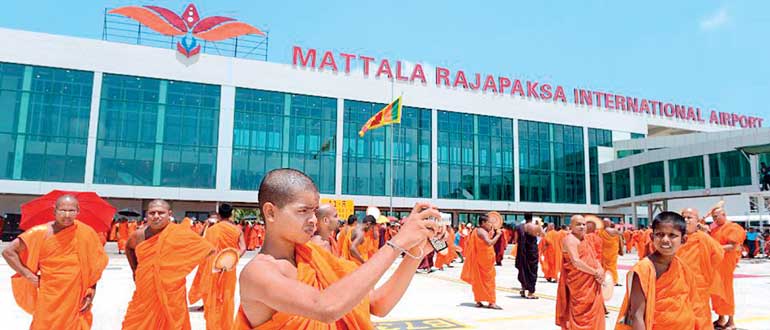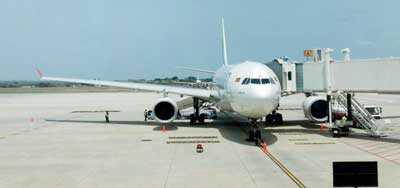Monday Mar 31, 2025
Monday Mar 31, 2025
Monday, 4 July 2016 00:08 - - {{hitsCtrl.values.hits}}
 Having built the MRIA airport, the governments are still struggling to get airlines to operate into Hambantota. Poor marketing and planning of these projects have resulted in losses. The country needs a challenging team with modern thinking and with a new direction business model to boost the economy in various fields.
Having built the MRIA airport, the governments are still struggling to get airlines to operate into Hambantota. Poor marketing and planning of these projects have resulted in losses. The country needs a challenging team with modern thinking and with a new direction business model to boost the economy in various fields.
 Creating a whole eco system around the airports will help development of passenger traffic. It is very rare that an airport can survive/sustain only with a cargo hub. We need to build commercial businesses to support the airports that will trigger the growth the multipliers effect. Working on incentives and tax benefits will attract FDIs and manufacturers from China, Japan and Korea to outsource to Sri Lanka and establish their activities.
Creating a whole eco system around the airports will help development of passenger traffic. It is very rare that an airport can survive/sustain only with a cargo hub. We need to build commercial businesses to support the airports that will trigger the growth the multipliers effect. Working on incentives and tax benefits will attract FDIs and manufacturers from China, Japan and Korea to outsource to Sri Lanka and establish their activities.
Airports have now evolved as drivers of business location and urban development in the 21st century in the same way as highways did in the 20th century. Rapid expansion of airport linked commercial facilities is making today’s air gateways anchors of 21st century metropolitan development where distant travellers and locals alike can conduct business, exchange knowledge, shop, eat, sleep and be entertained without going more than 15 minutes from the airport. This functional and spatial evolution is transforming many city airports into airport cities.
This eye opening look at the new phenomenon called the aerotropolis gives us the glimpse at the way we will live in the near future and the way we will do business. The engine of the aerotropolis is the airport and its air routes which offer speedy connectivity to suppliers or customers around the world. Economies have become increasingly globalised and reliant on air commerce for trade and in goods and services.
Airport cities or the modern aerotropolis concept are the best for MRIA in Hambantota and other developing airports within the country which will help aviation planning and economic growth. Proper planning of airport cities and the aerotropolis results in attracting sustainable development well as the highest return on investments.
In fact out of 80 airport developments in China, 62 are going to be based on the aerotropolis concept. The true challenger is planning  to get the aerotroplis right. If there is not appropriate planning, airport-area development will be spontaneous, haphazard, economically inefficient, and ultimately unsustainable. The aerotropolis model brings together airport planning, urban and regional planning, and business-site planning to create a new urban form that is highly competitive, attractive and sustainable.
to get the aerotroplis right. If there is not appropriate planning, airport-area development will be spontaneous, haphazard, economically inefficient, and ultimately unsustainable. The aerotropolis model brings together airport planning, urban and regional planning, and business-site planning to create a new urban form that is highly competitive, attractive and sustainable.
Major airports have become key nodes in global production and enterprise systems offering them speed, agility and connectivity. They are also powerful engines of local economic development, attracting aviation – linked business of all types to their environs. These include among others, time sensitive manufacturing, logistics and distribution facilities, perishables, hotels, sports, entertainment, retail, industrial parks and free zones, convention, trade and exhibition complexes and office building that house air travel intensive executives and professionals.
Aviation industry plays a vital role for economic growth in developing countries. Low cost airlines will help the tourism industry with affordable air travel while the low cost carriers could use under-utilised airports.
The aerotropolis is thus much more of a dynamic forward-looking model than a static, cross sectional model that often reflects historic airport area development before air commerce played such an important economic role. The aerotropolis is the frontier of the next phase of globalisation.
(The writer is the Director – Commercial and Operations, at Airline Cargo Resources Fz, Dubai).